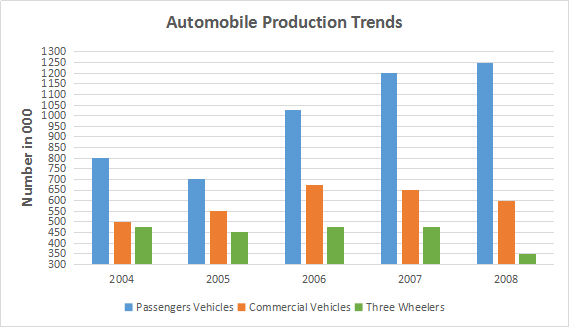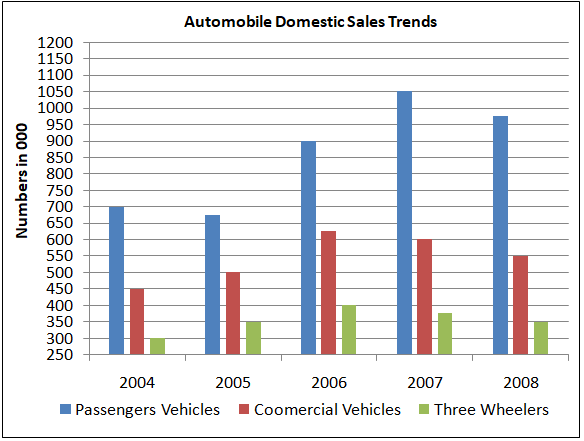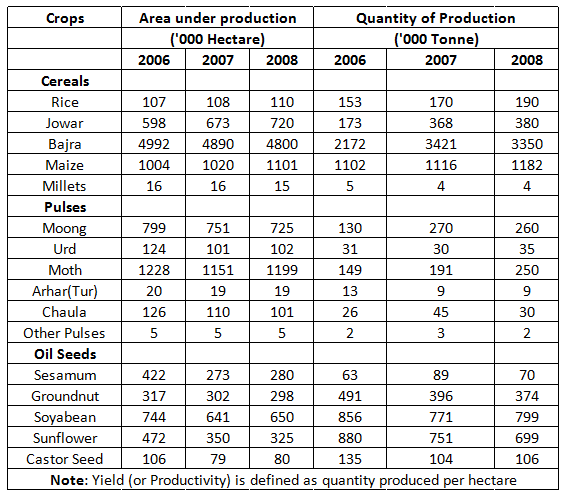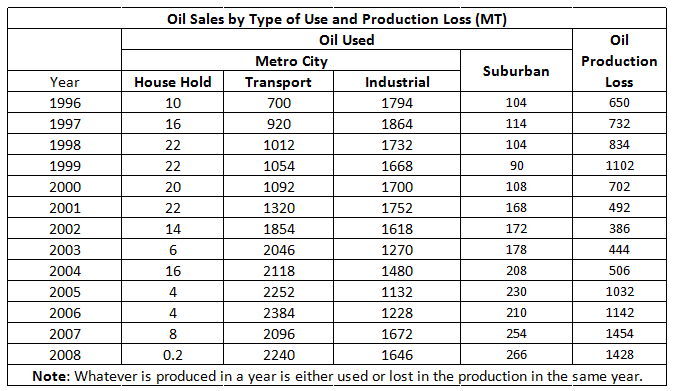IIFT2009QuestionPaper Related Question Answers
1.
Read the following passage carefully and answer the questions given at the end.The tight calendar had calmed him, as did the constant exertion of his authority as a judge. How he relished his power over the classes that had kept his family pinned under their heels for centuries - like the stenographer, for example, who was a Brahmin. There he was, now crawling into a tiny tent to the side, and there was Jemubhai reclining like a king in a bed carved out of teak, hung with mosquito netting."Bed tea", the cook would shout "Baaad tee". He would sit up to drink.6:30: he'd bathe in water that had been heated over the fire so it was redolent with the smell of wood smoke and flecked with ash. With a dusting of powder he graced his newly washed face, with a daub of pomade, his hair. Crunched up toast like charcoal from having been toasted upon the flame, with marmalade over the burn.8:30: he rode into the fields with the local officials and everyone else in the village going along for fun. Followed by an orderly holding an umbrella over his head to shield him from the glare, he measured the fields and checked to make sure his yield estimate matched the headman's statement. Farms were growing less than ten maunds an acre of rice or wheat, and at two rupees a maund, every single man in a village, sometimes, was in debt to the bania. (Nobody knew that Jemubhai himself was noosed, of course, that long ago in the little town of Piphit in Gujarat, money-lenders had sniffed out in him a winning combination of ambition and poverty ... that they still sat waiting cross-legged on a soiled mat in the market, snapping their toes, cracking their knuckles in anticipation of repayment .... )
2.00: after lunch, the judge sat at his desk under a tree to try cases, usually in a cross mood, for he disliked the informality, hated the splotch of leaf shadow on him imparting an untidy
mongrel look. Also, there was a worse aspect of contamination and corruption: he heard cases in Hindi, but they were recorded in Urdu by the stenographer and translated by the judge into a second record in English, although his own command of Hindi and Urdu was tenuous; the witnesses who couldn't read at all put their thumbprints at the bottom of "Read Over and Acknowledged Correct", as instructed. Nobody could be sure how much of the truth had fallen between languages, between languages and illiteracy; the clarity that justice demanded was nonexistent. Still, despite the leaf shadow and language confusion, he acquired a fearsome reputation for his speech that seemed to belong to no language at all, and for his face like a mask that conveyed something beyond human fallibility. The expression and manner honed here would carry him, eventually, all the way to the high court in Lucknow where, annoyed by lawless pigeons shuttlecocking about those tall, shadowy halls, he would preside, white powdered wig over white powdered face, hammer in hand.His photograph, thus attired, thus annoyed, was still up on the wall, in a parade of history glorifying the progress of Indian law and order. 4:30: tea had to be perfect, drop scones made in the frying pan. He would embark on them with forehead wrinkled, as if angrily mulling over something important, and then, as it would into his retirement, the draw of the sweet took over, and his stern work face would hatch an expression of tranquillity.5:30: out he went into the countryside with his fishing rod or gun. The countryside was full of game; lariats of migratory birds lassoed the sky in October; quail and partridge with lines of babies strung out behind whirred by like nursery toys that emit sound with movement; pheasant - fat foolish creatures, made to be shot - went scurrying through the bushes. The thunder of gunshot roiled away, the leaves shivered, and he experienced the profound silence that could come only after violence. One thing was always missing, though, the proof of the pudding, the prize of the action. the manliness in manhood, the partridge for the pot. because he returned with - Nothing!He was a terrible shot.8:00: the cook saved his reputation, cooked a chicken, brought it forth, proclaimed it "roast bastard", just as in the Englishman's favourite joke book of natives using incorrect English. But sometimes, eating that roast bustard, the judge felt the joke might also be on him, and he called for another rum, took a big gulp, and kept eating feeling as if he were eating himself, since he, too, was (was he?) part of the fun ....9:00: sipping Ovaltine, he filled out the registers with the day's gleanings. The Petromax lantern would be lit - what a noise it made - insects fording the black to dive - bomb him with soft flowers (moths), with iridescence (beetles). Lines, columns, and squares. He realized truth was best looked at in tiny aggregates, for many baby truths could yet add up to one big size unsavory lie. Last, in his diary also to be submitted to his superiors, he recorded the random observations of a cultured man, someone who was observant, schooled in literature as well as economics; and he made up hunting triumphs: two partridge ... one deer with thirty- inch horns....11:00: he had a hot water bottle in winter, and, in all seasons, to the sound of the wind buffeting the trees and the cook's snoring, he fell asleep.Which of the following statements is incorrect?
3.
Answer the questions based on the following graphs

 Which of the following year exhibited highest percentage decrease over the preceding year in the automobile production?
Which of the following year exhibited highest percentage decrease over the preceding year in the automobile production?
4. Assume whatever that is not sold domestically was exported, then which year has registered highest growth in exports of automobiles?
5. If the ratio of the domestic sale price of a commercial vehicle, a passenger vehicle, and a three wheeler is 5 : 3 : 2 then what percent of earnings (approximately) is contributed by commercial vehicle segment to the overall earnings from domestic sales during the period 2004-2008?
6. For which year were the domestic sales of automobiles closest to the average (2004-2008) domestic sales of automobiles?
7. Which of the following years exhibited highest percentage increase over the preceding year in the automobile sales?
8. The ratio between absolute increase in domestic sales over preceding year and absolute increase in production over the preceding year is highest during which year?
9.
Answer the questions based on the following information.The table below gives the details of money allocation by three Mutual funds namely, Alpha, Beta, and Gama. The return for each fund depends on the money they allocate to different sectors and the returns generated by the sectors. The last column of the table gives return for each of the sectors for a one year period.
 Which fund has received more return per rupee of investment for one year period?
Which fund has received more return per rupee of investment for one year period?
10. If the allocation of money by the fund managers to different sectors is based on the internal ranking (i.e. Sector with 1st rank gets highest allocation). Sectors with 0 allocation of money should be considered as 14th rank irrespective of the number of sectors in that category. In the light of these examine the following statements: I. Automobile is ranked by both Alpha and Beta as same II. Financial is most favoured by all three Mutual Funds III. Services is ranked by all three Mutual Funds within top 9 ranks Select the best option:
11. Ms. Hema invested Rs. 10.00 lakhs in fund Gama in the beginning of the period. What will be the value of the investment at the end of 1 year period?
15.
Answer the questions based on the following Table Examine the following statements:
I. Total productivity of pulses has gone down over the years
II. Maize is the most stable cereal in terms of productivity over the years
III. Percentage growth in area and quantity of production is highest in the case of Jowar during the entrie period.
Select the best option:
Examine the following statements:
I. Total productivity of pulses has gone down over the years
II. Maize is the most stable cereal in terms of productivity over the years
III. Percentage growth in area and quantity of production is highest in the case of Jowar during the entrie period.
Select the best option:
16. Examine the following statements: I. Over the period total cereal productivity has gone up II. Area, Production and yield of the total oil seeds is on decline III. Though there is a decline in the area under Urd production but the quantity of production and yield has gone up over the years. Select the best option:
17.
Study the following carefully and answer the questions.
 During which year the Oil used for House Hold as a percentage of Total Oil Used is highest?
During which year the Oil used for House Hold as a percentage of Total Oil Used is highest?
18.
Study the following carefully and answer the questions.
 During which year the ‘Oil Production Loss’ as a proportion of ‘Total Oil Produced’ is the lowest?
During which year the ‘Oil Production Loss’ as a proportion of ‘Total Oil Produced’ is the lowest?
19.
Study the following carefully and answer the questions.
 During which year use of oil by ‘Suburban’ as a proportion of ‘Total Oil Used’ was the highest?
During which year use of oil by ‘Suburban’ as a proportion of ‘Total Oil Used’ was the highest?
20.
Study the following carefully and answer the questions.
 For how many number of years the growth rate in ‘Production of Oil’ is more than the growth rate in ‘Total Oil Used’?
For how many number of years the growth rate in ‘Production of Oil’ is more than the growth rate in ‘Total Oil Used’?
22.
Study the followin information carefully and answer the questions.Four houses Blue, Green, Red and Yellow are located in a row in the given order. Each of the houses is occupied by a person earning a fixed amount of a salary. The four persons are Paul, Krishna, Laxman, and Som.Read the following instruction carefully:
I. Paul lives between Som and Krishna
II. Laxman does not stay in Blue house
III. The person living in Red house earns more than that of person living in Blue
IV. Salary of Som is more than that of Paul but lesser than that of Krishna
V. One of the person earns Rs. 80, 000
VI. The person earning Rs. 110,000 is not Laxman
VII. The salary difference between Laxman and Son is Rs. 30,000
VIII. The House in which Krishna lives is located between houses with persons earning salaries of Rs. 30,000 and Rs. 50,000
IX. Krishna does not live in Yellow house, and the person living in yellow house is not earning lowest salary among the four persons.Who lives in Red house?
25. Mr Raghav went in his car to meet his friends John. He Drove 30 kms towards north and then 40 kms towards west. He then turned to south and covered 8 kms. Further he turned to east and moved 26 kms. Finally he turned right and drove 10 kms and then turned left to travel 19 kms. How far and in which direction is he from the starting point?
 Powered By:Omega Web Solutions
Powered By:Omega Web Solutions© 2002-2017 Omega Education PVT LTD...Privacy | Terms And Conditions